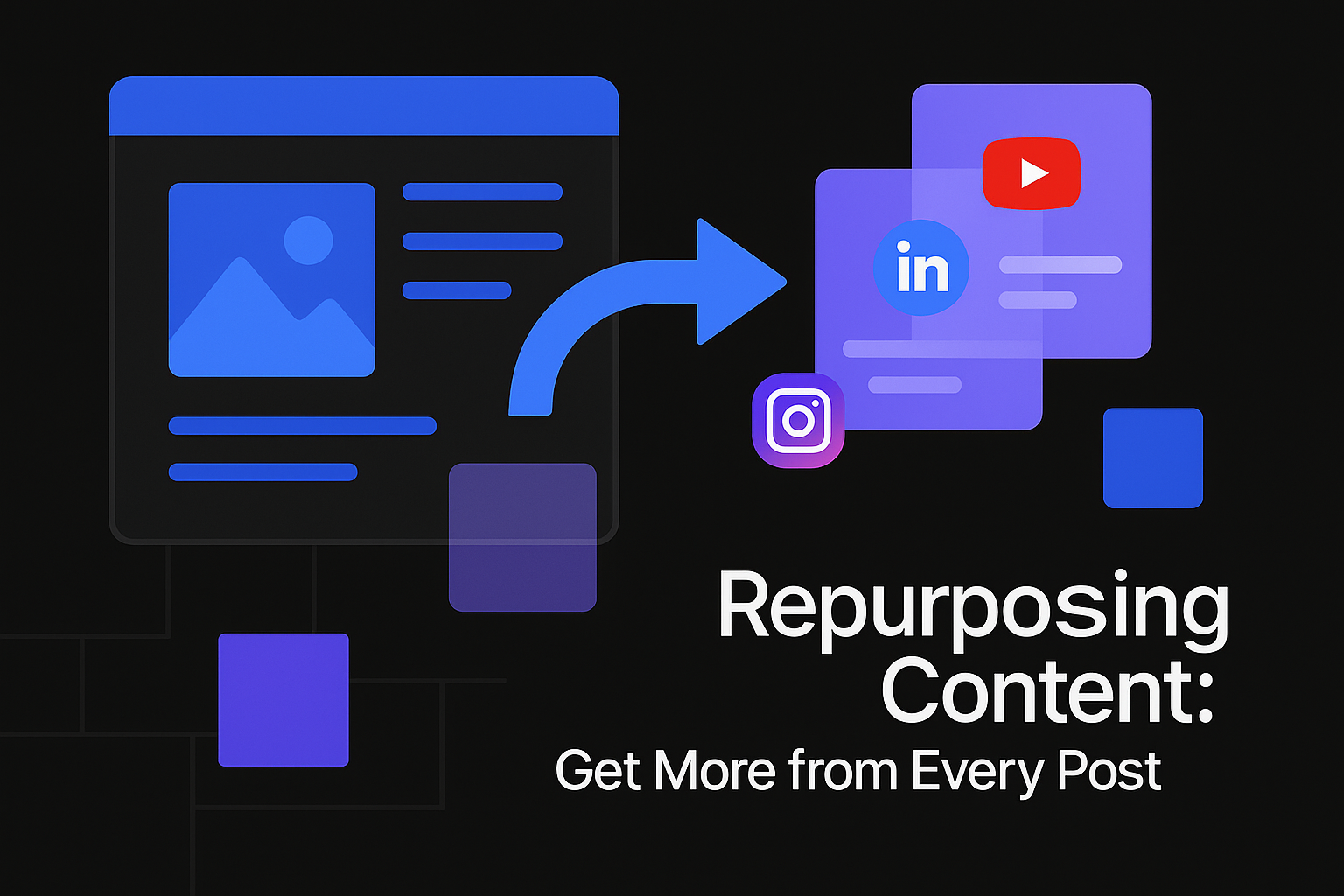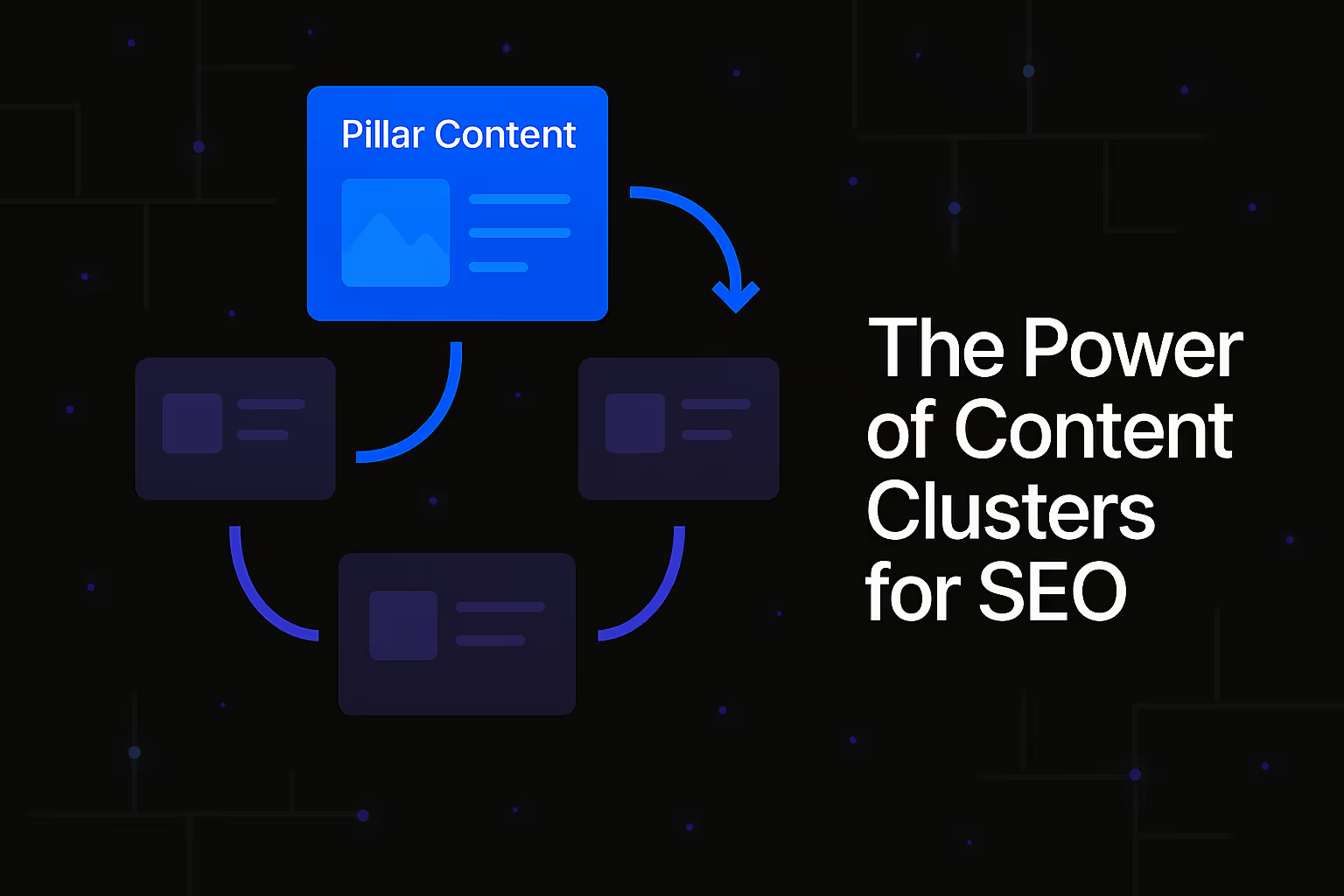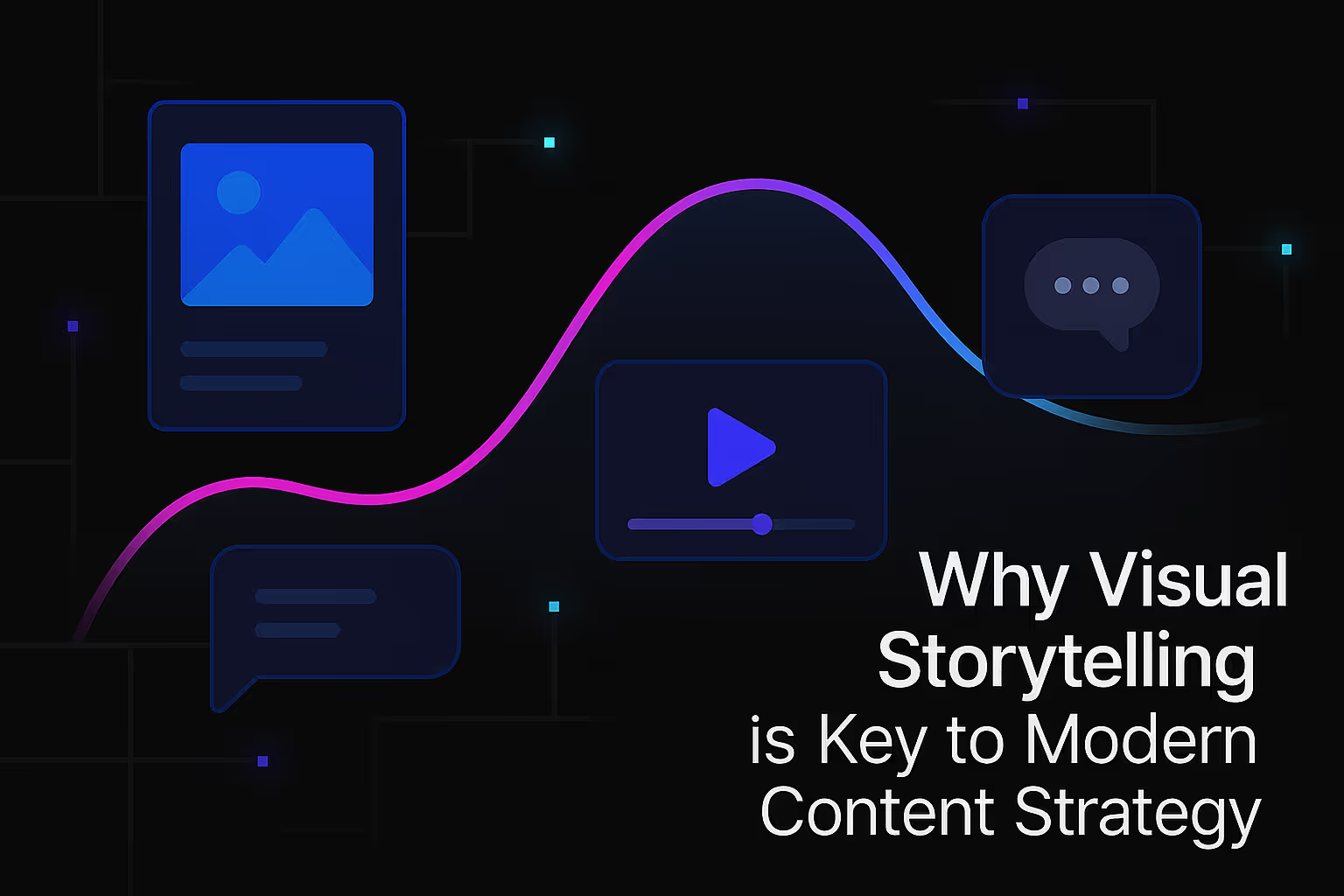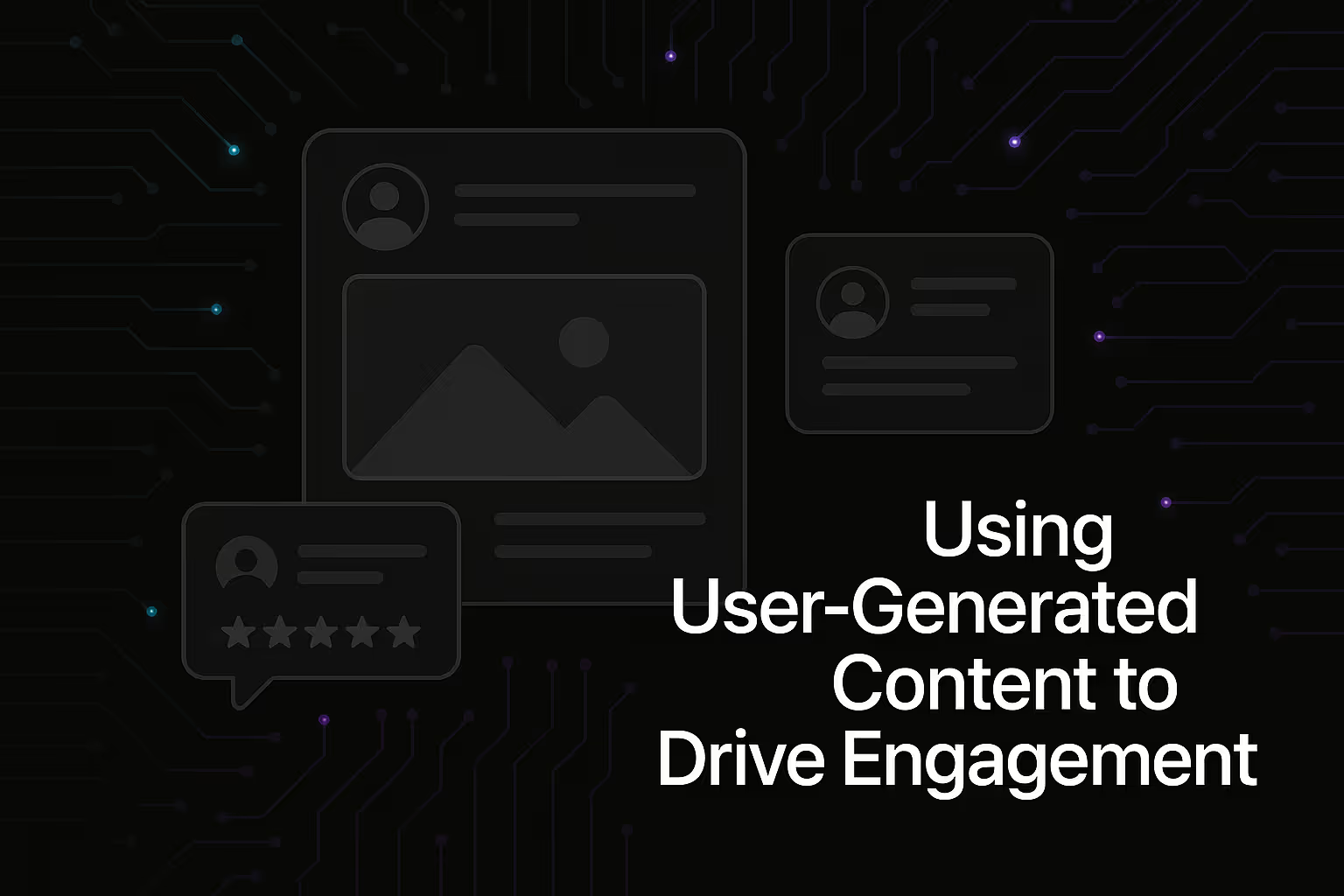Repurposing Content: Get More from Every Post

In the fast-paced world of digital marketing, content is often hailed as king. We pour countless hours into researching, writing, and perfecting blog posts, articles, and guides, aiming to capture audience attention and climb the search engine rankings. However, merely publishing a piece of content, no matter how brilliant, is only the first step. The true mastery of content marketing, particularly from an SEO perspective, lies in understanding that your investment doesn't end when an article goes live. Instead, it transitions into a continuous journey of optimization and amplification. This journey is precisely where the power of content repurposing unfolds, transforming your existing assets into a dynamic force for sustained SEO growth.
Repurposing content isn't simply about recycling old material; it's about intelligently re-imagining and re-packaging your core messages to reach new audiences, serve different purposes, and reinforce your authority across various platforms. It's a strategic approach that maximizes the return on every single content asset you create, ensuring your insights resonate longer and deeper within the digital ecosystem. In an environment where search algorithms constantly evolve and user behaviors shift, the ability to adapt and extend the lifespan of your valuable content is not just an advantage—it's an absolute necessity.
Understanding the Foundation of Content Longevity
Beyond the Publish Button: Why Repurposing is Your SEO Secret Weapon
Many content strategies mistakenly focus almost exclusively on the creation of new material. While fresh content is undoubtedly vital, an equally powerful, yet often underutilized, strategy lies in leveraging what you already have. Think of your published blog posts as valuable raw materials. Each article represents a significant investment of time, research, and expertise. To truly maximize the return on this investment, you must look beyond the initial publish button and consider how that content can be intelligently transformed and distributed.
Content repurposing, when approached with a keen understanding of SEO, becomes a powerful force multiplier. It allows you to extract maximum value from every single piece you produce, extending its reach and impact far beyond its initial format or audience. This isn't just about efficiency; it's about strategically re-optimizing and re-contextualizing your insights to appeal to different search intents, engage diverse user preferences, and reinforce your thematic authority in the eyes of search engines. It's a sustainable SEO practice that ensures your efforts yield compounding benefits over time, building a more robust and interconnected web presence.
The Ever-Evolving Digital Landscape and Content Shelf Life
The digital landscape is inherently dynamic. Search engine algorithms are in a state of perpetual evolution, constantly refining how they interpret queries and rank content. What ranked well last year might struggle today if not maintained and updated. Beyond algorithmic shifts, user information needs and preferences also change. New statistics emerge, technologies advance, and perspectives evolve. Consequently, content, unlike a static printed page, has a natural shelf life.
Ignoring this reality means allowing valuable assets to gradually lose their relevance and visibility. An outdated article, even if once popular, can quickly become a liability, providing inaccurate information or simply failing to address current search queries. Therefore, the necessity of continuous adaptation is paramount. Repurposing content provides a built-in mechanism for this ongoing vigilance. It encourages regular content audits, allowing you to identify pieces that require updating, consolidation, or complete transformation to maintain their competitive edge and ensure they continue to serve both your audience and your SEO objectives effectively. This proactive approach ensures your content remains fresh, accurate, and highly discoverable in the eyes of both users and search engines.
Strategic Pillars of Intelligent Content Repurposing
Decoding Search Intent: The Compass for Your Repurposing Journey
At the heart of truly effective content repurposing for SEO lies a profound understanding of search intent. This critical concept defines the underlying goal a user has when typing a query into a search engine. Is someone looking for a quick answer, researching a product, trying to find a specific website, or ready to make a purchase? Recognizing these nuances is not just important for initial content creation; it becomes the fundamental compass guiding your repurposing efforts.
Search intent can generally be categorized into four main types: informational (seeking knowledge or answers), navigational (aiming to reach a specific site), commercial investigation (researching products/services with future purchase intent), and transactional (ready to buy or complete an action). Successful repurposing begins by asking: How can an existing piece of content be adapted to serve a different, yet related, search intent? For instance, a comprehensive blog post explaining "how SEO works" (informational) could be repurposed into a step-by-step guide for "setting up an SEO campaign" (commercial investigation) or a brief FAQ answering "common SEO questions" (informational, but concise).
The key here is tailoring the depth and format of your repurposed content to precisely match the prevailing search intent. If your original content serves a broad informational purpose, but you identify a segment of your audience with transactional intent, repurposing that information into a product comparison guide or a case study can directly address their specific needs. By meticulously aligning your repurposed content with distinct user intents, you significantly increase its chances of ranking effectively, capturing relevant traffic, and ultimately achieving your conversion goals. Understanding and acting upon search intent is not merely an SEO best practice; it is the cornerstone of intelligent content repurposing.
The Art of Consolidation: Building Comprehensive Guides from Disparate Pieces
One of the most powerful strategies in intelligent content repurposing is the art of consolidation. This involves identifying low-performing or overlapping articles on similar topics and merging them into a single, more comprehensive, and authoritative guide. Many websites, over time, accumulate a collection of shorter posts that might address facets of a larger topic but lack the depth or interconnectedness to rank strongly. This fragmentation can lead to issues like keyword cannibalization, where your own pages compete against each other for the same search terms, thereby diluting your SEO power.
Consolidation addresses this directly. By combining these disparate pieces, you create a robust, long-form content asset that signals to search engines your expertise and authority on a particular subject. This improved thematic depth can attract more valuable backlinks, reduce bounce rates by providing comprehensive answers, and inherently improve your overall site structure. The process involves more than just pasting text together; it requires careful extraction of core value from each piece, restructuring the information logically, expanding upon key insights, and adding new, unique perspectives.
Furthermore, consolidating content strengthens your internal linking opportunities. A comprehensive guide naturally becomes a central hub, allowing you to strategically link from numerous "tail" or sub-topic pages to this more general "head" or cornerstone content. This not only guides readers through your site, encouraging deeper engagement, but also effectively distributes "link equity" across your website, boosting the SEO value of your most important pages. In essence, content consolidation transforms a fragmented collection of resources into a cohesive, powerful knowledge base that significantly enhances your organic search visibility and user experience.
Refreshing and Revitalizing: Breathing New Life into Existing Content
Beyond the creation of entirely new content or the consolidation of old, lies the critical practice of content refreshing. This involves regularly updating previously published material to ensure its continued accuracy, relevance, and SEO performance. In a world where information rapidly evolves, statistics become outdated, and industry best practices shift, even high-performing content can gradually lose its edge if left untouched.
A strategic content refresh can be a remarkably efficient way to boost your search rankings, especially for pages that are "within striking distance"—those currently ranking in positions 5 to 9 on the Search Engine Results Page (SERP). These pages are already demonstrating some authority and relevance, meaning a targeted refresh can often push them into the coveted top spots, leading to significant increases in organic traffic.
What does a comprehensive content refresh involve? It extends beyond minor edits. It means scrutinizing data for accuracy, replacing outdated examples, integrating new research or expert quotes, expanding sections to provide greater depth, improving readability with new formatting, and updating calls to action to align with current goals. It also includes optimizing images with descriptive alt text and ensuring any multimedia elements are high-quality and accessible. In cases where content becomes entirely irrelevant or inaccurate, an intelligent approach also involves redirecting those outdated pages to more current and valuable content, preventing 404 errors and preserving link equity. By committing to regular content refreshing, you ensure your digital assets remain potent, authoritative, and perpetually valuable to both your audience and search engines.
Elevating Your Repurposed Content with Advanced SEO Tactics
Semantic SEO and Keyword Integration: Beyond Basic Matching
The landscape of search engine optimization has evolved significantly beyond simple keyword density. Modern SEO, particularly when applied to content repurposing, demands a deep understanding of semantic SEO. This means moving past merely matching isolated terms to comprehending the full context, underlying intent, and intricate relationships between concepts within your content. Search engines are increasingly sophisticated in their ability to understand natural language and the broader meaning of a topic.
When you repurpose content, you have an inherent opportunity to enhance its semantic richness. By combining different angles or expanding upon existing points, your content naturally becomes more comprehensive and contextually rich. Instead of just focusing on a single keyword, consider the entire topical cluster surrounding your core subject. Use synonyms, related terms, and latent semantic indexing (LSI) keywords naturally throughout the text. This isn't about keyword stuffing; it's about providing a holistic answer to a user's potential questions, even those not explicitly stated in their initial query.
For instance, if repurposing a post on "healthy eating," you wouldn't just repeat that phrase. You'd naturally integrate terms like "nutritious diet," "balanced meals," "wellness habits," and discuss related concepts such as "meal prepping" or "superfoods." This comprehensive approach signals to search engines that your content offers deep value and truly understands the subject matter. Ultimately, embracing semantic understanding ensures your repurposed content not only ranks for specific keywords but also establishes your authority as a definitive resource on a broader topic, leading to greater organic visibility.
Building a Robust Web: Strategic Internal and External Linking
Strategic linking is a foundational element of both user experience and SEO performance, and it takes on particular significance when repurposing content. As you consolidate, refresh, or transform existing assets, new and powerful opportunities for internal linking emerge. Internal links are hyperlinks that point to other pages on the same website, acting as a crucial guide for both users and search engine crawlers.
A well-executed internal linking strategy, especially within repurposed content, helps to establish a robust site structure. By linking relevant long-tail content (often the result of repurposing) to more general "head" or cornerstone content, you effectively signal to search engines which pages are most important on your site. This also efficiently distributes "link equity" or "PageRank" across your website, boosting the authority of your core pages and improving their chances of ranking higher. Furthermore, internal links guide readers through your site, encouraging them to discover more related content, increasing time on site, and reducing bounce rates. Always use descriptive anchor text for your internal links, providing clear context about the destination page for both users and search engines.
While internal links build your site's internal network, external linking also plays a vital role. Selectively linking out to high-authority, relevant external resources can enhance the credibility of your repurposed content. It shows that your information is well-researched and backed by reputable sources, contributing to your overall Expertise, Authoritativeness, and Trustworthiness (E-A-T). However, external links should always provide genuine value to the reader and open in a new tab to keep users on your site. By mastering both internal and external linking, repurposed content becomes an integral part of a powerful and interconnected web presence.
Visual Impact and Accessibility: Optimizing Images and Multimedia
In an increasingly visual and interactive digital world, optimizing images and multimedia is no longer an optional add-on for SEO; it's a critical component, especially when repurposing content. Transforming text-heavy posts into engaging visual formats like infographics, video summaries, or podcast episodes is an excellent way to reach diverse audiences and extend content lifespan. However, even if your repurposing remains primarily text-based, the strategic inclusion and optimization of images and other media can significantly enhance both user engagement and search engine discoverability.
For every image embedded within your repurposed content, the inclusion of descriptive alt text is paramount. Alt text serves multiple crucial functions: it describes the image content for visually impaired users utilizing screen readers, and it provides search engines with context about the image, helping them understand and index it correctly. While keywords can be naturally included in alt text, avoid keyword stuffing; focus on accurately describing the image.
For video content, which can be a highly effective repurposed format from a blog post, best practices include creating high-quality, engaging content. Embed these videos on standalone pages that also feature relevant text, or within existing articles where they add value. Crucially, write descriptive titles and descriptions for your videos, incorporating relevant keywords to improve their discoverability on platforms like YouTube and through organic search. Beyond specific optimizations, a broader consideration for all multimedia elements is overall accessibility. Ensuring your content is usable by everyone, regardless of ability, not only aligns with ethical content creation but also contributes positively to your SEO by signaling quality and user-centric design to search engines.
The Authority Factor: Demonstrating Expertise, Authoritativeness, and Trustworthiness (E-A-T)
In Google's ongoing efforts to deliver the most relevant and reliable information, the concept of E-A-T—Expertise, Authoritativeness, and Trustworthiness—has become an increasingly important factor for SEO. Repurposing content offers a powerful avenue to strengthen your E-A-T signals, not just to search engines, but to your audience as well.
When you consolidate disparate pieces of content into a single, comprehensive guide, you are, in essence, presenting a more unified, detailed, and authoritative stance on a particular subject. This demonstrates deep expertise, as you're not just touching on a topic but exploring its various facets in depth. Updating content with the latest research, statistics, and expert insights further bolsters its trustworthiness, showing that your information is current and reliable.
Moreover, repurposing allows you to showcase your expertise across different media formats. Transforming a well-researched blog post into an expert interview video, a detailed case study, or a problem-solution infographic allows you to present your knowledge in ways that resonate with different learning styles and preferences. Each new format becomes another touchpoint where your E-A-T is reinforced. By consistently providing accurate, well-researched, and thoroughly presented information, regardless of the format, repurposed content helps to solidify your reputation as a trusted voice in your industry, which in turn contributes positively to your search engine rankings.
Measuring Success and Adapting for Continuous Improvement
Performance Analysis: Identifying What Works and What Needs More Love
The journey of intelligent content repurposing is not a set-it-and-forget-it endeavor. To truly maximize its SEO value, it requires continuous monitoring and rigorous performance analysis. This critical step involves diving into your analytics to understand how your repurposed content is performing in the wild. Are your consolidated guides attracting more organic traffic? Are your refreshed articles climbing the SERP? Are your repurposed videos generating engagement?
Identifying both high-performing and low-performing content is crucial. By studying the patterns in your successful repurposed pieces, you can identify repeatable strategies and replicate them across other content assets. Conversely, low-performing repurposed content isn't a failure; it's an opportunity for further refinement. Perhaps the search intent wasn't fully addressed, the on-page SEO could be improved, or the distribution strategy needs a tweak.
A particularly strategic focus should be placed on pages that are already ranking in positions 5 to 9 on the SERP. These pages are often "within striking distance" of higher performance and represent some of the most lucrative opportunities for optimization through repurposing and refreshing. Tools like Ahrefs, Semrush, and Google Search Console are invaluable for generating performance reports, identifying keyword opportunities, and tracking your progress. This data-driven approach allows you to make informed decisions, ensuring your repurposing efforts are always aligned with tangible SEO gains.
The Iterative Nature of SEO: Continuous Learning and Adaptation
The digital landscape, particularly the realm of SEO, is anything but static. It is a perpetually evolving environment, characterized by constant shifts in search algorithms, emerging technologies, and dynamic user behaviors. Therefore, the most effective SEO strategies, including content repurposing, must embody an iterative nature. This means embracing a mindset of continuous learning, adaptation, and refinement.
Repurposing content inherently promotes this agile approach. It forces you to revisit your existing assets, prompting questions about their current relevance, accuracy, and performance. This ongoing engagement with your content library ensures you remain responsive to changes, whether they are new keyword trends, shifts in search intent, or updates to core ranking factors. By actively refreshing and re-optimizing, you keep your content footprint fresh and aligned with the latest SEO best practices.
The data gathered from performance analysis of your repurposed content provides invaluable feedback loops. What worked for one type of content might not work for another, and what was effective last quarter might be less so this quarter. This continuous learning process, driven by concrete performance metrics, allows you to iteratively improve your repurposing strategies, ensuring your content assets are always working at peak efficiency for organic search.
Repurposing as a Sustainable SEO Strategy
Ultimately, content repurposing transcends being a mere tactic; it solidifies itself as a truly sustainable SEO strategy. In an era where content saturation is a real concern, simply producing more and more new articles can be an exhaustive and less efficient approach. Instead, repurposing advocates for a smarter, more resourceful utilization of your existing assets.
By breathing new life into older posts, consolidating fragmented information, and adapting your core messages for different formats and platforms, you achieve several key benefits. You significantly extend the lifespan and reach of your valuable content, maximizing the initial investment. You reduce the constant pressure for entirely new content creation while still maintaining a fresh and dynamic online presence. Furthermore, you build a deeper, more interconnected content library that signals unparalleled authority and comprehensive coverage to search engines.
Repurposing helps you to efficiently fill content gaps, target new keywords, and engage diverse audience segments without starting from scratch every time. It fosters a robust internal linking structure, enhances your E-A-T signals, and ensures your website consistently delivers high-quality, relevant information. In essence, content repurposing is about strategically leveraging your content wealth to achieve a more profound, more resilient, and ultimately more successful presence in organic search, ensuring you get more from every post.
Similar Insights
Stay Updated with Our Insights
Join our newsletter for the latest trends and tips in web development and digital marketing.




